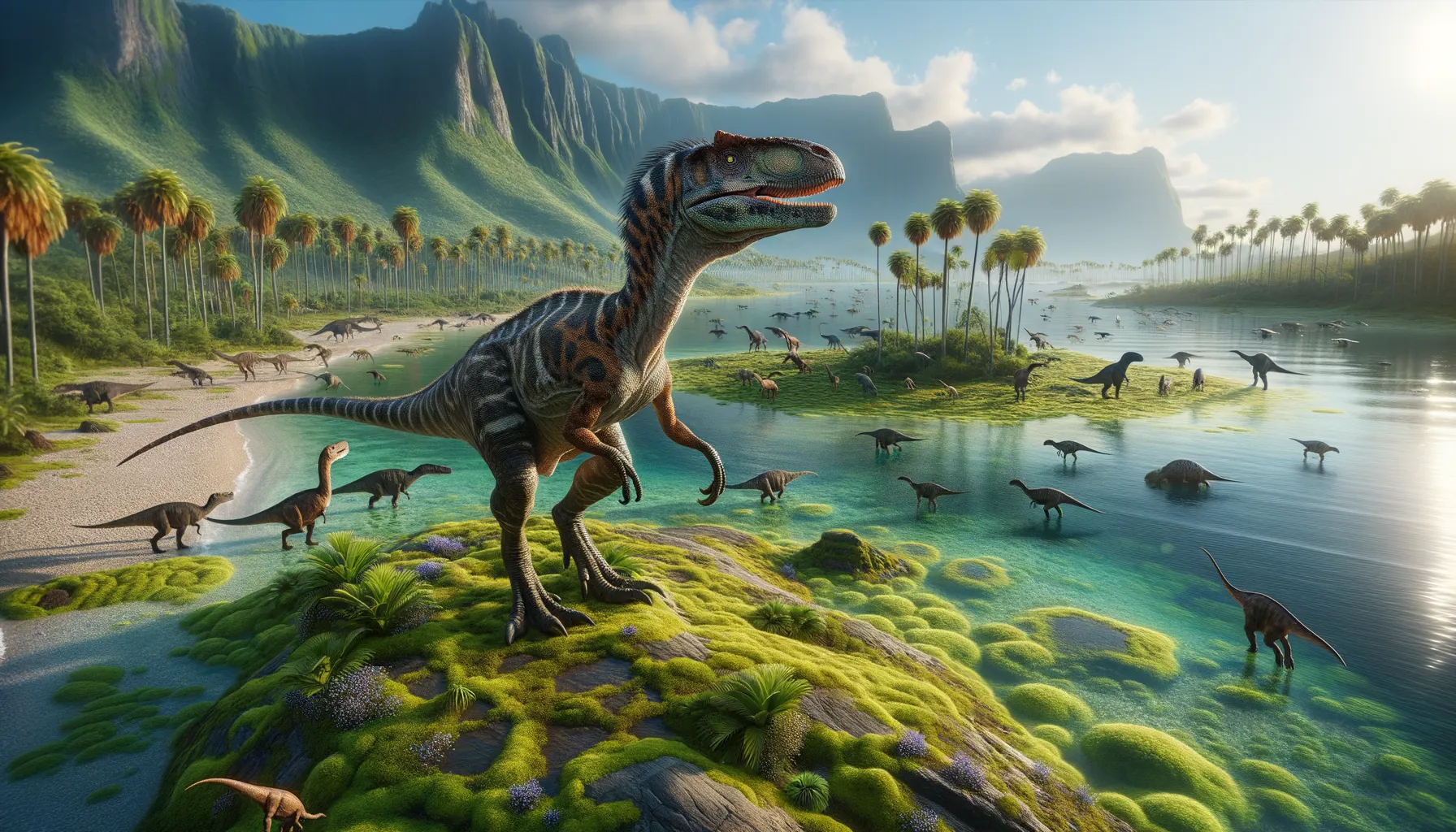
Bradycneme
Island predator of a bygone era.
Period
Cretaceous
Length
About 2 to 3 meters long.
Height
Approximately 1.5 meters tall.
Weight
Lightly built, possibly around 50-100 kg.
Bradycneme is a genus of theropod dinosaur known from the Late Cretaceous of Romania. Thought to be a small predator, Bradycneme's exact classification has been debated. Originally mistaken for bird-like species, it has since been reclassified as a non-avian theropod. It lived in an area once characterized by islands, rich in diverse dinosaur species.
Diet
Bradycneme was likely a carnivore, preying on small vertebrates and possibly insects. Its diet would have comprised animals available in its isolated island habitat, adapting opportunistically to available food sources.
Hunting
As a small theropod, Bradycneme could have relied on stealth and agility to hunt its prey. It likely employed quick bursts of speed to surprise its targets and capture them with precision.
Environmental challenges
Living on an island brought unique challenges for Bradycneme, including limited resources and competition from other species. The changing sea levels during the Late Cretaceous also altered its habitat, impacting food availability. Adaptations to such an environment would have been essential for survival, requiring flexibility in hunting and diet.
Speed
Likely moderate, adapted for quick sprints.
Lifespan
Estimated to be several decades.
First discovery
Found in Romania during the late 1970s.
Fun Facts
- Bradycneme was discovered in Romania, making it one of the rare dinosaurs found in Eastern Europe.
- The name Bradycneme derives from Greek words meaning 'slow leg', although this might not accurately describe its speed.
- Bradycneme lived during the Late Cretaceous period, around 70 million years ago.
- Originally, its fossil finds were thought to belong to a type of bird due to their unique structure.
- Bradycneme was likely a small to medium-sized theropod dinosaur, walking on two legs.
- Its fossils were found in the Hațeg Basin, an area known for a variety of unique dinosaur discoveries.
- There is still a lot of debate among paleontologists about the exact classification and characteristics of Bradycneme.
Growth and Development
Bradycneme might have had a rapid growth phase during its juvenile years, reaching near-adult sizes quickly to survive in its predator-rich environment. Development could have been closely tied to available resources, with fluctuations in food impacting growth rates. Evidence of varying growth patterns could reflect adaptation strategies over generations.
Habitat
Bradycneme inhabited what is now Romania, an area that was a series of islands during its time. The environment would have been lush and varied, with forests and coastal regions providing diverse ecological niches. Such a habitat supported a range of minor and major dinosaur species, shaping Bradycneme's ecological role.
Interaction with other species
As part of a diverse ecosystem, Bradycneme likely had interactions with various dinosaur species. Interactions could have ranged from competition with similarly sized carnivores to avoiding larger predators. Mutual relationships, such as feeding on different prey, would have defined its interaction dynamics.
Natural lifespan
Bradycneme likely lived up to 30 or more years under natural conditions.
Reproduction
Reproductive strategies could have involved egg-laying in nests hidden from predators. Social behavior during reproduction might have included basic parental care, given its theropod lineage. The island environment could have influenced unique reproductive adaptations.
Social behaviour
Bradycneme may have been solitary or lived in small groups, dependent on environmental pressures. Such social structures could have helped in cooperative hunting or sharing information about resources. Adult individuals might have been more solitary, focusing on territory and survival.
Fossil locations
Fossils of Bradycneme have been discovered in the Hațeg Basin of Romania. Initially, its remains were thought to be of an owl-like bird. Recurrent discoveries in similar stratigraphic levels confirm its presence in this region, providing insights into the Cretaceous island ecosystems.
